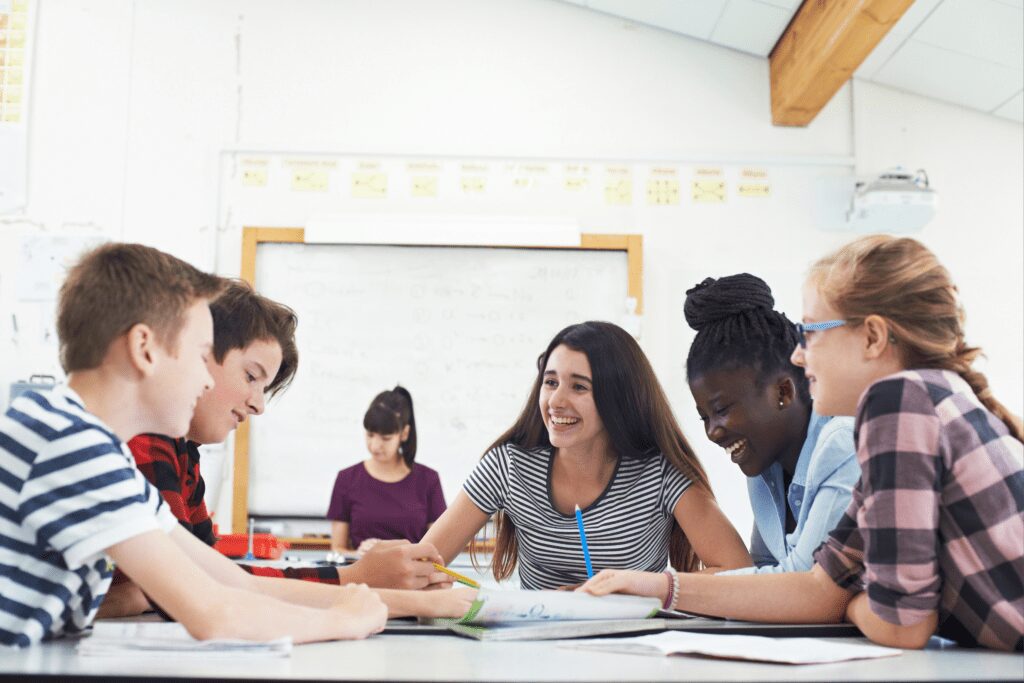Why we should use unconditional positive regard in schools:
- It helps students see the best in themselves.
- It helps model and develop a culture.
- It benefits teacher well-being.
My school is currently really buckling down on trauma-informed practice. For those who aren’t familiar, there are specific teaching strategies that are particularly supportive of students who have experienced trauma. These strategies aren’t only helpful in this context, though, and they can help all students, including those without trauma. One of these strategies certainly stood out to me; unconditional positive regard.
While most of the strategies are things that you can do or teach to your students, unconditional positive regard is rooted in how you think as a teacher. It is exactly what it says on the tin; thinking about your students positively regardless of circumstances. It doesn’t mean that you can’t get frustrated, but that you don’t dislike your students as people based on their behavior.

For some teachers, this is easier than for others, and if you find this difficult, it by no means makes you a bad teacher. This is about your own mindset and how you think, so a little bit of training is in order. It is essential to remember that your frame of mind as a teacher depends on many factors at school and at home. Everyone has days where this seems impossible. If you can manage to get it and be consistent, it’s well worth the effort.
1. Unconditional positive regard helps students see the best in themselves.
Your students look up to you. Just as children look to their parents for behavior and thought patterns, students often look to their teachers to learn how they fit into the wider world. You may be the first adult they can trust outside of their family, and some will spend more time interacting with you over a school year than their own parents. Teachers are their analog for how the rest of the world will see them, and if their teacher can’t stand them, it has a lasting impact.
Taking a severe hit to your self-esteem like this can affect a person for the rest of their lives. Teachers who clearly don’t like a particular student can cause more complex trauma, especially if they see this teacher every day. It can affect how they see themselves, and if they see themselves as a no-good loser who will never amount to anything, then that’s what they’re likely to become.
On the other hand, if you show them that even at their worst, they are worthy of forgiveness and can fix their mistakes or, at the very least, do better next time, they will learn this. This learning develops their self-image and attitude toward the world and sets them along the right path.
2. It helps model and develop a culture.
Setting class expectations is good practice for any teacher. Clarifying what behavior you expect from your students and negotiating how everyone would like to be treated is the first massive step to establishing a positive class culture. One of the enormous benefits of you practicing unconditional positive regard as the teacher is that it often rubs off the students.
This goes beyond tolerance and treating everyone with respect. I know a fantastic teacher at a religious school who takes significant issue with all of the teachings about tolerance. Every year, he goes off on a massive rant about how tolerance is ridiculous. We should not be tolerating each other; we should love one another. Just putting up with your students is not the standard you want to set for your class. You want them to see the good in each other and value each other as people, and that begins with you.
Like teaching your students to develop their self-esteem, teaching them to see the best in other people is an incredible life skill. Even if you don’t particularly like someone else, seeing their value and regarding them positively will set them up for success in the future.

3. It benefits teacher well-being.
I know that I’ve put this one last, but I think that it is the most important. Mindsets are surprisingly difficult to change. Whenever someone says that something is easy as long as you have the right mindset, that actually means that it is difficult. The easy thing about it just being about mindset is that it’s easy to blame yourself when things go wrong. But being able to develop a mindset focused on forgiveness and seeing the best in your students can really help your well-being as a teacher.
I can’t emphasize enough how difficult this can be, but the benefits for yourself are worth it. Coming home at the end of the day after having chairs thrown at you and still thinking positive things about your students can be almost impossible. It can be impossible if you aren’t being supported at work to feel safe and do your job. But barring this, if you can focus on the good in your students and their growth, no matter how insignificant it may seem, your days will become easier.
Most teachers get into teaching because they love it. They love being with students all day and helping them grow into the best people they can be. Unconditional positive regard is something that most new teachers have in droves. It can slip throughout a career. Consciously re-focussing on it could be the thing that improves your own quality of life and extend your love of teaching.




